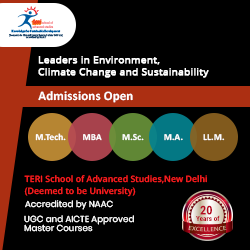Dr. Bhimrao Ramji Ambedkar was born on 14th April 1891 into a Dalit Mahar family of Western India. Born as an untouchable, he was subjected to discrimination his entire life. Even when he returned from London as an educated scholar with a Ph.D., he still faced humiliation and discrimination. Because noticeably, education had no meaning to the caste system. Education in no way could change your social hierarchy, contrary to today’s popular opinion.
All his life, Ambedkar rigorously advocated for social freedom for Dalits. His legacy as a socio-political reformer continues to inspire many even today. Annihilation of caste was his most radical work and it hits home. The unfortunate thing is that even after 84 years of its publication, Annihilation of Caste (AoC) has not been able to have the same impact that Ambedkar would have imagined.
AoC was originally written as a speech for the annual conference of the Jat Pat Todak Mandal, a social reformist organization. However, it was later published by Ambedkar himself because the Mandal didn’t approve of some parts of the speech which denounced the Vedas and cited Ambedkar’s inclination towards leaving Hinduism. While the Mandal wanted to abolish caste, they were ultimately, not in support of giving up Hinduism altogether.
Yes, AoC is an attack on Hinduism. It questions some of the very core principles of Hinduism which are stated in the Vedas and the Smritis. But for Hindus to dismiss its authenticity and ignore its existence only because it calls them out for some of the inhumane practices that their religion approves of, is unfair.
“You must not only discard the Shastras, you must deny their authority, as did Buddha and Nanak. You must have courage to tell the Hindus that what is wrong with them is their religion—the religion which has produced in them this notion of the sacredness of Caste. Will you show that courage?”
― B.R. Ambedkar, Annihilation of Caste
Growing up in the 21st century, for many of us, caste never played any role in our lives which is why today, many young people believe caste-baste discrimination hardly exists in Urban India. Contrary to this view each year we see the atrocities against Dalits rising. At such times, reading AoC becomes almost necessary. A thought-provoking text, it will make you question the very nature of your beliefs and practices as a Hindu.
The fault lies in the education system. History as we read it in school textbooks is drastically tweaked. Rarely is there any mention of Dalit struggles and some of the references have even been removed. Even Ambedkar finds his way into the textbooks as the father of the Indian Constitution but all the work he did all his life to improve the position of Dalits has been systematically excluded.
On the other hand, we see chapters and chapters on Gandhi. While what he did for us to gain independence cannot be undermined, his character and thoughts as a person have been greatly skewed to give him the stand of a saint- a mahatma, which as Ambedkar believed, he was not. The Doctor and the Saint by Arundhati Roy which serves as an introduction to the annotated version of AoC throws light on this subject. It highlights the differences between Mahatma (The Saint) Gandhi and Dr. Ambedkar (The Doctor).
While Gandhi, a Hindu orthodox wanted to abolish untouchability, he was never against the abolition of the caste system. In his own words- “I believe that if Hindu society has been able to stand, it is because it is founded on the caste system… To destroy the caste system and adopt the Western European social system means that Hindus must give up the principle of hereditary occupation which is the soul of the caste system.”
The Doctor and the Saint will hit you like an epiphany because throughout our school lives we’ve seen Gandhi in a very different light. It brings out a darker side of Gandhi which is mostly kept hidden to preserve his idealist image. Since it is clear that our education has failed us, the onus lies upon us to educate ourselves because one cannot fight for what one does not know. And to educate ourselves about caste, AoC is an essential read.
While we see most upper castes today breaking the caste rules to fit their needs- I mean how many Brahmins today know Sanskrit? How many of them are vegetarian?- but when it comes to marriages even today the first question that arises in their minds is what caste is the man/woman. Even in educated households, marrying someone from the lower castes is an unspeakable thing to do. Ironically, one of the solutions Ambedkar prescribed for breaking the caste system in AoC is inter-caste marriages.
Perhaps one reason why Gandhi is celebrated so much more is because he was successful in his struggle to free Indians from British rule. Meanwhile, Ambedkar wasn’t. He failed to free the Dalits from upper caste oppression. Nonetheless, his job was much harder than Gandhi’s. While Gandhi set out to free India from an oppressive rule which was only 2 centuries old, Ambedkar set out to abolish an oppressive system that had existed since times unknown, all the way back to the age of ‘Lord Rama’.
“Every Congressman (in general, any person) who repeats the dogma of Mill that one country is not fit to rule another country must admit that one class is not fit to rule another class.”
― B.R. Ambedkar, Annihilation of Caste
It is also true that we’ve failed Ambedkar. No ignorance is not bliss, one must not live in denial because the problem of caste is very real. The least we can do is acknowledge its existence. In the final words of Ambedkar- “Educate, Agitate, Organize.”
Read Next: Casteism Inflicted Vocabulary

